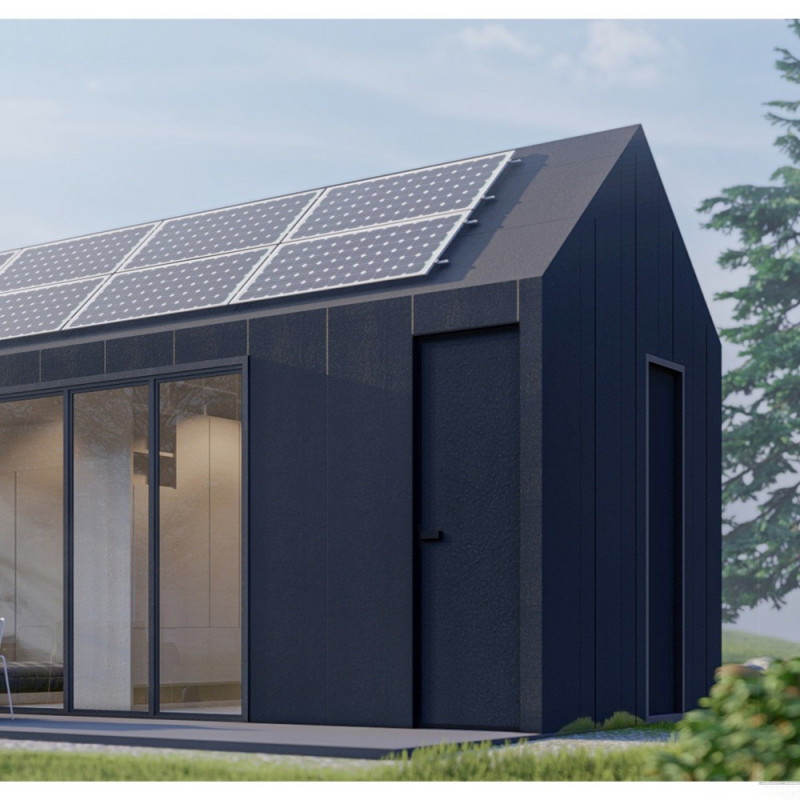5 key facts about this project
The structure employs a minimalist aesthetic, utilizing durable materials like black metal for the exterior cladding. This choice not only enhances the visual appeal but also contributes to the building’s longevity and energy efficiency. The integration of solar panels further underscores the commitment to renewable energy sources, allowing the project to minimize its environmental impact.
The floor plan emphasizes an open concept that merges kitchen, dining, and living areas into a single multifunctional space. This approach fosters community and interaction, vital for modern lifestyles. The design allows for flexible furniture arrangements, supporting varied use cases from family gatherings to remote work scenarios.
The elevation of the sleeping area into a loft maximizes floor space on the ground level and creates a sense of privacy. Large glass windows are strategically positioned to maximize natural light and provide unobstructed views of the landscape, reinforcing the connection between indoors and outdoors.
Unique Attributes of Architectural Design
What sets "Compact Nature Living" apart from other residential projects is its emphasis on multifunctionality and a design that adapts to both user needs and environmental contexts. The architects prioritize sustainable materials and energy-efficient systems, making the home not only functional but also environmentally responsible.
The project champions flexibility with furniture solutions that can be reconfigured based on the user's immediate needs. This innovative approach allows the space to serve various functions, catering to different lifestyles within a compact footprint. Additionally, the structural design, featuring maximized volumes and minimized waste, aligns with principles of sustainable architecture, which is increasingly relevant today.
Environmentally Responsible Design Choices
The materials used in the construction of "Compact Nature Living" include black metal cladding, plywood finishes, glass for windows, and solar panels. These choices serve dual purposes: they promote sustainability and enhance the building's aesthetic cohesion. The black metal exterior allows for efficient temperature regulation while presenting a clean, modern look. Plywood interiors add warmth and texture, creating an inviting atmosphere.
This project showcases how architects can create spaces that are not only functional but also respect and blend with the natural environment. The focus on renewable energy use and sustainable material choices speaks to the growing trend in architecture that seeks to minimize the carbon footprint associated with residential living.
Readers interested in further exploring the architectural aspects of "Compact Nature Living" are encouraged to review the architectural plans, sections, and designs that elucidate the various elements and innovative approaches that define this project. A deeper dive into its architectural ideas will highlight its contributions to the discourse on sustainable and efficient residential architecture.























